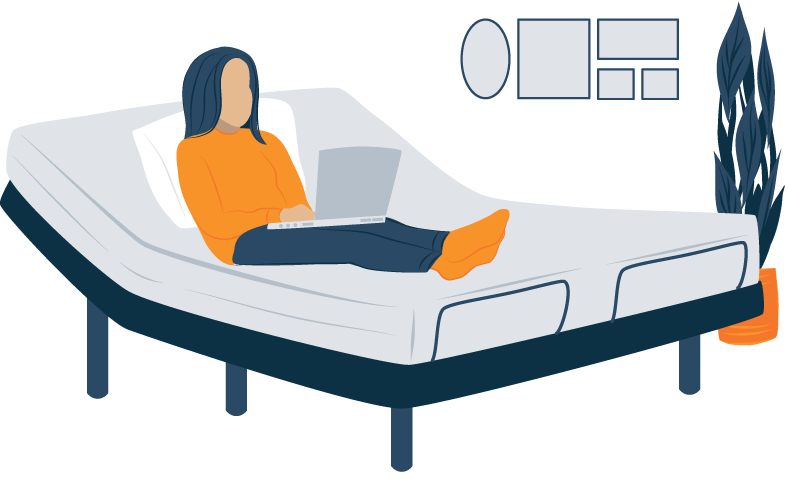Have you ever contemplated the joys of sleeping in a zero-gravity position? Picture this: you’re floating gently in mid-air, your body cradled in a cocoon of comfort, with your weight evenly distributed. While this may sound like a dream, it raises an intriguing question: can you actually sleep on your side in zero gravity? To answer that, we’ll venture into the mechanics of sleep positions, the benefits and challenges of zero-gravity sleeping, and how side-sleeping could be harmonized within this unique posture.
The concept of zero gravity originates from the realm of astronautics, where it describes a state of weightlessness. However, in the world of sleep, it refers to an adjustable bed positioning that elevates the head and legs, creating a gentle incline. This position mirrors the natural curvature of the spine, much like how astronauts feel buoyed by space’s absence of gravitational pull. The allure of zero-gravity sleeping is profound, enticing many to ponder whether it can accommodate the side-sleeper—a demographic that makes up a significant portion of the population.
Before delving into the mechanics, let’s explore why people favor side-sleeping. This position is often lauded for its potential to alleviate snoring and reduce the likelihood of sleep apnea. Additionally, it can ease symptoms for those with gastroesophageal reflux disease (GERD) and is even reputed to bolster cognitive function by promoting brain health. But with the rise of adjustable beds mimicking zero gravity, one must wonder, can we experience these side-sleeping benefits while reaping the rewards of zero gravity?
To navigate this sleeping style conundrum, we first need to evaluate the fundamental aspects of side-sleeping. When nestled on one’s side, the body naturally forms a curve that supports the spine. The hips and shoulders engage, creating a plush pressure point on the mattress. Zero-gravity positioning elevates the legs and head, which could lead to discomfort for the side-sleeper, as the hips may not align properly, disrupting the natural flow of the body’s contour.
This brings us to a potential challenge: while zero-gravity is ingenious for back sleepers, can the side-sleeper adeptly transition to this position without sacrificing comfort? Interestingly, some adjustable beds now boast a feature that allows a gentle tilt for side-sleepers. This innovative design attempts to marry the advantages of both postures, permitting those who prefer to snooze on their sides to enjoy the perks of zero-gravity benefits.
A critical point of exploration is the overall support provided by the mattress and adjustable base. Selecting a mattress that complements the natural curve of the body is paramount. Memory foam with its viscoelastic properties can accommodate the curves and contours, providing relief to pressure points. Meanwhile, hybrid mattresses may offer the firm support desired by side-sleepers, particularly for those with broader shoulders or hips, who often experience discomfort if the mattress lacks adequate support.
Adoption of zero gravity can offer advantages for side-sleepers if one navigates its nuances thoughtfully. Elevating your legs can eliminate pressure on the lower back, potentially helping to alleviate discomfort experienced during nighttime tossing and turning. Furthermore, this elevation may improve circulation, which is particularly beneficial for individuals prone to swelling in their legs. But here’s the caveat: as with any sleep position adjustment, a period of adaptation is inevitable. The transition may yield temporary discomfort as the body acclimates to the novelty of this blended positioning.
Moreover, let’s consider the importance of pillow selection. The right pillow is quintessential for supporting the head and neck, ultimately influencing spinal alignment. For side-sleepers in a zero-gravity position, a thicker pillow may be beneficial to maintain optimal alignment, preventing strain on the neck. If you’re opting for this dynamic duo—side-sleeping coupled with zero gravity—investing in quality pillows tailored for your preferred position can elevate your sleeping experience.
Additionally, the interplay of lifestyle habits with sleep positions cannot be overlooked. Individuals experiencing chronic pain conditions or discomfort in specific areas should consult with healthcare professionals before embarking on any new sleep styles. Understanding unique body mechanics and requirements is essential to customizing the sleeping environment to cater to personal health needs.
As we weave through the realms of sleeping positions, it’s vital to maintain a spirit of exploration. The beauty of modern innovation means that traditional sleep barriers are continually being dismantled in favor of comfort and health optimization. Although the juxtaposition of zero gravity and side-sleeping might pose a challenge, the fusion of these two practices offers a canvas of possibilities for achieving restorative sleep.
Ultimately, while zero-gravity sleeping might initially seem incompatible with side-sleeping, parents, partners, and even yourself can experiment with how to create a comfortable sleep haven. Through thorough exploration of mattress choices, pillow configurations, and awareness of body mechanics, the natural quandary of sleep can transform into a harmonious blend of innovation. So, why not take the plunge? Try sleeping on your side, nestled within the comforts of zero gravity—after all, the only daunting question remains whether you can wake up feeling revitalized and eager for a new day with the stars as your inspiration.
